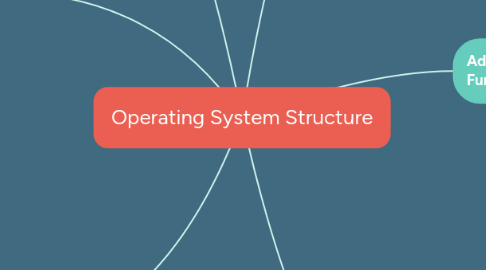
1. Layered approach
1.1. OS divided into a number of layers(level) each built on top of lower layers.
1.1.1. bottom layer (level 0)= hardware
1.1.2. highest layer= user interface
1.2. Advantage
1.2.1. simplicity of constructon and debugginng
1.3. Disadvantage
1.3.1. The careful definition and interaction of the layers
1.3.2. less efficient
2. Microkernal
2.1. small operating system core
2.2. contains only essential core OS funtions
2.3. external subsystem
2.3.1. device drivers
2.3.2. file system
2.3.3. virtual memory manager
2.3.4. windowing system
2.3.5. security services
2.4. Benefits
2.4.1. extensibility
2.4.2. flexibility
2.4.3. reliability
2.4.4. portability
3. OS Design Goals
3.1. User goals
3.1.1. convenient to use, easy to learn, reliable, safe and fast
3.2. System goals
3.2.1. easy to design, implement, maintain, flexible, reliable, error-free and efficient
4. Operating System Services
4.1. User interface
4.2. program execution
4.3. i/o operations
4.4. file-system manipulation
4.5. communications
4.6. error detection
5. Additional Operating System Functions
5.1. resource allocation
5.2. accounting
5.3. protection and security
6. System Calls
6.1. provide the interface between a running program and the operating system
6.1.1. available as assembly language instruction
6.1.2. languages that replaced assembly language for systems programming allow system calls to be made directly
6.2. 3 methods used to pass parameters between running program and operating system
6.2.1. 1. register
6.2.2. 2. stored in block, table, memory and address of block passed as a parameter in a register
6.2.3. 3. placed or pushed onto the stack by the program and popped off the stack by the OS.
6.3. type of system calls
6.3.1. process control
6.3.2. file management
6.3.3. device management
6.3.4. information maintenance
6.3.5. communications
6.3.5.1. message passing
6.3.5.2. shared memory
6.3.6. protection

